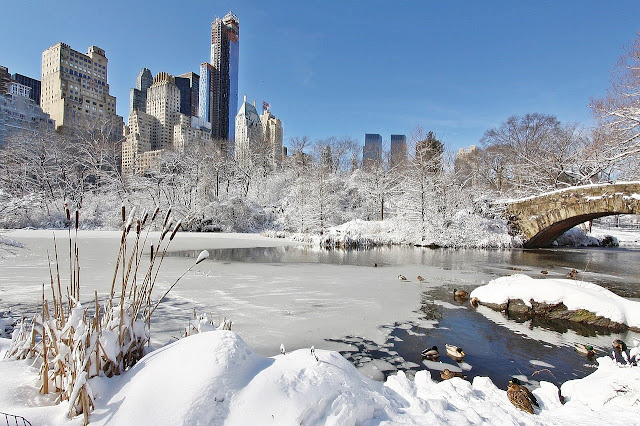If you're planning on visiting New York City in January, it's important to know what to expect in terms of weather and things to do. While the weather can be cold and snowy, there are plenty of winter activities, events, and attractions that make it worth the trip. With fewer crowds and unique winter attractions, it's a perfect time for a cozy and adventurous vacation. Here's our ultimate guide to visiting New York City in January, complete with tips for dealing with winter weather, must-see attractions, and fun activities for all ages.
The Ultimate Guide to Visiting New York in January: Weather, Attractions, and More
 |
| New york city winter weather |
Weather in January
New York City in January is typically cold with an average high of 38°F (3°C) and an average low of 27°F (-3°C). However, temperatures can fluctuate greatly, so it's important to come prepared with warm clothing and layers. It's also a good idea to check the weather forecast regularly as snow and ice storms can cause transit delays.
Must-See Attractions
While some outdoor attractions may be closed due to winter weather, there are still plenty of must-see sights in New York City in January. Here are a few:
- The Metropolitan Museum of Art: With over 2 million works of art, the Met is a must-see attraction any time of year. Plus, it's warm inside!
- Times Square: The bright lights of Times Square are a year-round attraction, and January is no exception.
- Central Park: While some of the park's attractions, like the zoo, may be closed in winter, it's still a beautiful place to take a stroll or go ice skating.
- The Empire State Building: Take in panoramic views of the city from the observation deck of this iconic skyscraper.
Fun Activities
There are plenty of fun activities to do in New York City in January. Here are some suggestions:
- Ice skating: There are several outdoor ice skating rinks in the city, including Rockefeller Center and Central Park. It's a great way to get some exercise and enjoy the winter scenery.
- Winter festivals: From the Winter Jazzfest to the Winter Antiques Show, there are several winter festivals that take place in the city in January.
- Broadway shows: January is a great time to catch a Broadway show as tickets may be more readily available and prices may be lower.
- Warm up with hot chocolate: New York City is famous for its delicious hot chocolate, and there's no better time to indulge than in January. Try a classic cup from City Bakery or a creative concoction from Jacques Torres Chocolate.
Getting Around
While the subway and buses are still the most popular ways to get around New York City, winter weather can cause delays and cancellations. Consider using ride-share services like Uber or Lyft or hailing a taxi for shorter distances. It's also a good idea to wear shoes with good traction as sidewalks and streets can be slippery in winter weather.
Here are some additional tips to keep in mind when visiting New York City in January:
- Take advantage of the sales: January is a popular month for sales in New York City, particularly after the holidays. Many stores offer discounts on winter clothing, making it a great time to stock up on warm gear.
- Visit museums and galleries: Winter is a great time to explore the many museums and galleries in New York City. You'll be able to escape the cold and see some incredible art and exhibitions. Check out the Museum of Modern Art, the Whitney Museum of American Art, or the Guggenheim Museum for some of the best art experiences in the city.
- Check out the Chinese New Year Parade: If you're in town in late January or early February, don't miss the Chinese New Year Parade in Chinatown. It's a colorful and lively celebration with dragon dancers, traditional music, and delicious food.
- Attend a sporting event: New York City is home to several professional sports teams, including the Knicks (basketball), Rangers (hockey), and Giants and Jets (football). Catching a game can be a fun and exciting way to spend an afternoon or evening.
- Dress in layers: As mentioned before, New York City in January can be cold, but it's important to dress in layers so you can adjust to changing temperatures throughout the day. This will help you stay warm and comfortable no matter where your adventures take you.

